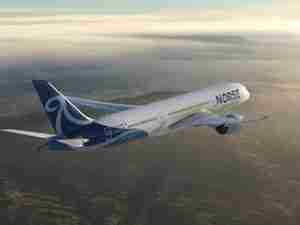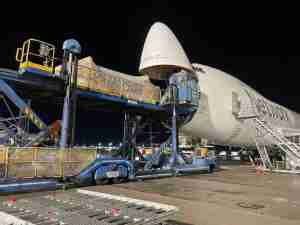Qantas Airways Ltd. shares fell the most in almost eight months as the airline flagged higher-than-expected spending on planes in an an immediate attempt to cope with the rapid rebound in passenger growth.
Demand for flights will “remain strong” into the second half of 2023 and fares will stay significantly above pre-pandemic levels, Qantas said Thursday. But with supply-chain blockages delaying some new aircraft by six months, Qantas said it will beef up its domestic fleet in coming months with second-hand Airbus SE jets. It also added nine A220s to an existing order from the French manufacturer to help meet appetite for travel within Australia.
“We’re seeing no relenting of the strong demand,” Chief Executive Officer Alan Joyce said. “That’s why we’re keen to get capacity back in the air. While interest rates and inflation are expected to hit discretionary spending at some point, we’re yet to see any signs of that in our bookings.”
Net income at Qantas in the six months ended Dec. 31 was A$1 billion compared with a loss of A$456 million a year earlier, when coronavirus restrictions destroyed income. The airline also announced a stock buyback of as much as A$500 million, adding to last year’s A$400 million program.
The Australian carrier’s bumper earnings underscore the pace and intensity of aviation’s recovery from the pandemic as travel demand surges. From Ryanair Holdings Plc in Europe to American Airlines Group Inc., carriers around the world are cashing in on the rebound. With appetite for flights often outstripping available seats, there’s little to hold fares and profits back.
The downside is Qantas is being forced to spend more than anticipated on its fleet this year and next to try and get more flights on its schedule. It’s scrambling to source second-hand jets, as well as bolster existing orders, at a time when aircraft manufacturers face supply-chain snarls that are holding back deliveries.
The stock dropped as much as 6.5% in early Sydney trading. Capital expenditure in the year ending June will increase by as much as A$400 million to between A$2.6 billion and A$2.7 billion, and will climb to as much as A$3.2 billion in the following 12 months.
“When you combine the delays with the sustained growth in travel demand that we’re seeing, we need to find other ways to lift capacity in the short and medium term,” Joyce said.
Like Qantas, many airlines are already reaping the rewards from cost-cutting programs or reorganizations implemented during the pandemic.
The Qantas group, which includes low-cost division Jetstar, expects to receive an average of one new plane every three weeks for the next three years. The company is renewing its domestic fleet and will launch ultra-long, non-stop services from Australia’s east coast to New York and London in late 2025.
Still, aircraft aren’t coming fast enough to restore seat volumes on overseas flights. International capacity will increase from just 60% of pre-Covid levels to 81% in the first six months of 2023, Qantas said.
Carriers worldwide have suffered losses approaching $200 billion over the past three years. With travel restrictions now mostly dismantled, the International Civil Aviation Organization expects passenger demand to recover to pre-Covid levels on most routes this quarter, and then to about 3% higher than 2019 levels by year-end.
Joyce, who has been Qantas CEO since 2008, is one of aviation’s longest-serving leaders. He has agreed to stay on until at least the end of 2023. Chairman Richard Goyder said in November he’d discuss with Joyce at some point this year how long he’d remain CEO.
Qantas’ underlying profit before tax in the latest six-month period — its preferred gauge of earnings because it strips out one-off costs — was A$1.43 billion compared with a loss of A$1.28 billion a year earlier.








